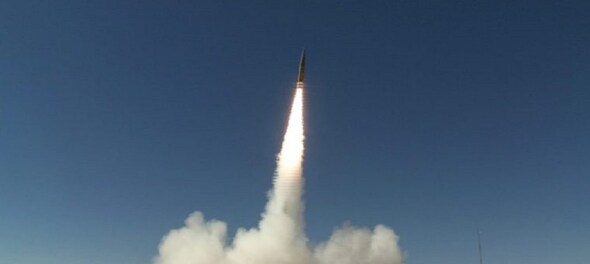
North Korea test-fired two suspected ballistic missiles, according to the Seoul military, about a week after its failure to put a spy satellite into orbit, as the United States sent B-1B strategic bomber to Korean Peninsula for joint drill with South Korea.
The missiles were fired toward waters off the east of the peninsula, South Korea’s Joint Chief of Staff said late Wednesday. They appear to have fallen outside of Japan’s exclusive economic zone, Japan’s NHK said. Further details on the launch were not immediately available.
The “military has strengthened its surveillance and vigilance in preparation for any further provocations, and is maintaining full readiness posture in close coordination with the US,” the Joint Chiefs of Staff said in a statement.
North Korea’s Kim Jong Un regime last week failed for the second time in about three months to put a spy satellite into orbit when its rocket had troubles soon after launch, dealing a blow to Kim who wanted a reconnaissance probe to keep an eye on US forces.
Pyongyang has bristled at US-South Korean joint military drills that started on Aug. 21 and run through the end of month, calling them a prelude to invasion that could spur North Korea into action.
The latest launches are a show of defiance that coincides with the drills and a meeting in mid-August among the leaders of the US, Japan and South Korea where they discussed ways to enhance their security cooperation and military training to respond to the nuclear and missile threats from Kim’s regime.
Before the latest launch, Pyongyang had already fired 24 ballistic missiles so far this year, which included four intercontinental ballistic missiles that could hit the US mainland. Kim’s regime launched more than 70 ballistic missiles last year, a record for the state.
Kim has ignored US calls to return to long-stalled nuclear disarmament talks. But he has been busy modernizing his arsenal of missiles and conducting tests of systems to attack South Korea and Japan, which host the bulk of US military personnel in the region.
North Korea launched two short-range ballistic missiles into waters off its east coast on July 19 after the USS Kentucky stopped in Busan, in the first visit to a port in South Korea in about four decades by a submarine capable of firing nuclear ballistic missiles. It fired two more a few days later when another nuclear-powered US sub arrived at a separate South Korean port to replenish supplies.
Those launches came after North Korea earlier in July tested its Hwasong-18 solid-fuel ICBM. It flew longer than any of its other ICBMs and appeared designed to carry a multiple nuclear weapons payload, which increases the chances at least one bomb could slip past interceptors and make its way to a target.
A solid-fuel missile could be deployed quickly and fired with little warning. Liquid-fuel missiles in general take more time to prepare as propellant is added to their tanks, making them vulnerable to attack before taking off.
The US in June sent a nuclear-powered, guided-missile submarine to South Korea for the first time in six years for a show of force meant to deter North Korea from military strikes. The visit came after Yoon won assurances during a summit with Biden in April to strengthen extended deterrence measures, including more deployments of nuclear-armed submarines.
Displays of the US’s atomic assets are meant to serve as a reminder of a warning Biden issued to leader Kim during a meeting with the South Korean president that a nuclear strike by North Korea would be suicidal.
Kim’s regime has been modernizing its missile arsenal over the past few years, rolling out models that are quick to deploy and designed to evade US-operated interceptors as it tries to increase its ability to deliver a credible strike.
In late March, North Korea released photos of Kim inspecting the state’s biggest display of warheads since he took power about a decade ago, indicating the leader has no intention of abandoning his atomic arsenal. Weapons experts said the images indicate Pyongyang has made progress in miniaturising its warheads and could lead to more testing to verify their capabilities.
North Korea has demonstrated its missiles could fly as far as the US but there are questions as to whether the warheads would be able to stay intact to reach their targets.
Check out our in-depth Market Coverage, Business News & get real-time Stock Market Updates on CNBC-TV18. Also, Watch our channels CNBC-TV18, CNBC Awaaz and CNBC Bajar Live on-the-go!


Odisha: Fight of heavyweights in Sambalpur where farmers, weavers hold the key
May 17, 2024 10:22 AM
Lok Sabha Election 2024: What rural Delhi wants
May 16, 2024 10:10 PM
Over 50 onion farmers detained in Nashik ahead of PM Modi's visit
May 16, 2024 11:14 AM
Why Google CEO is cautiously optimistic about the election year
May 16, 2024 9:51 AM

